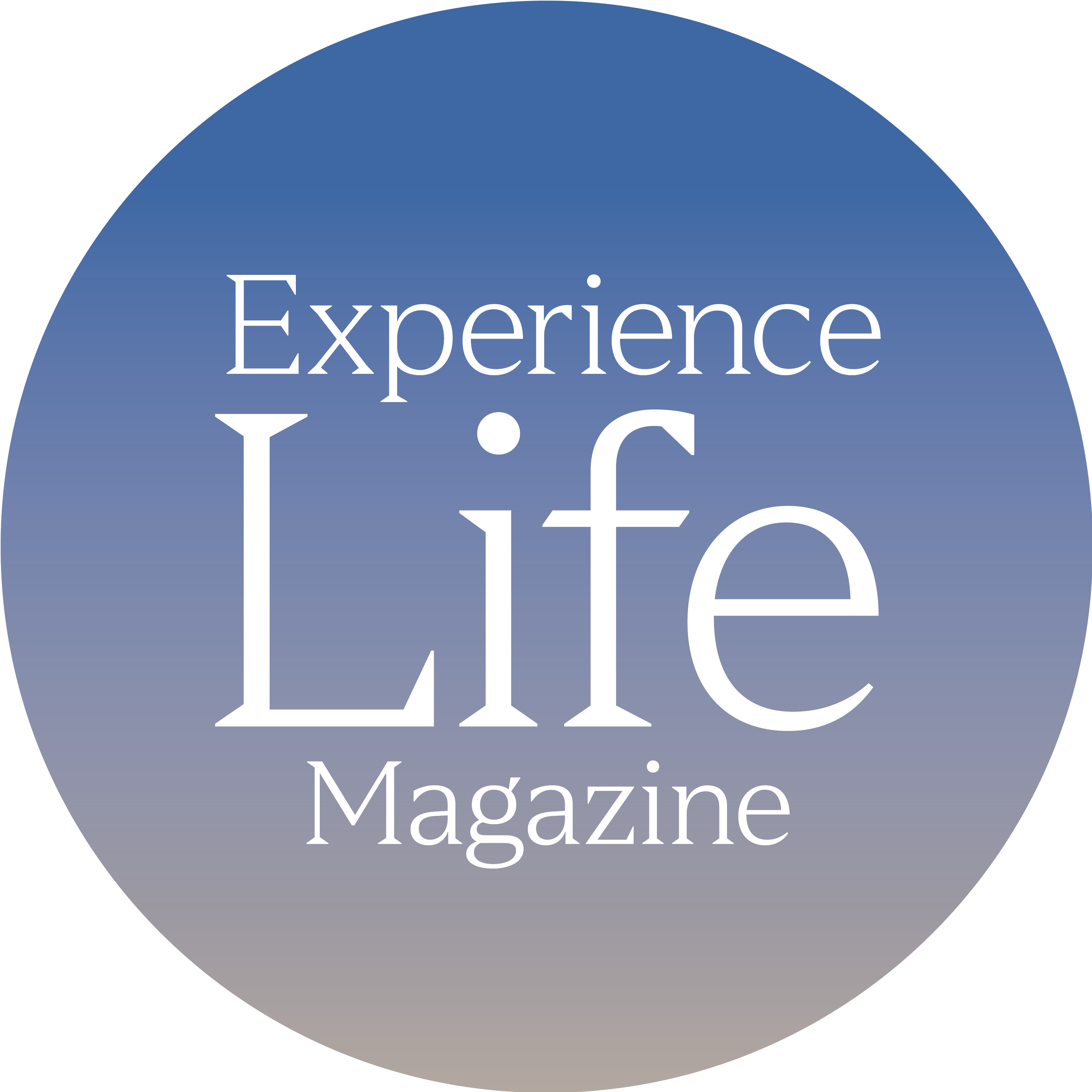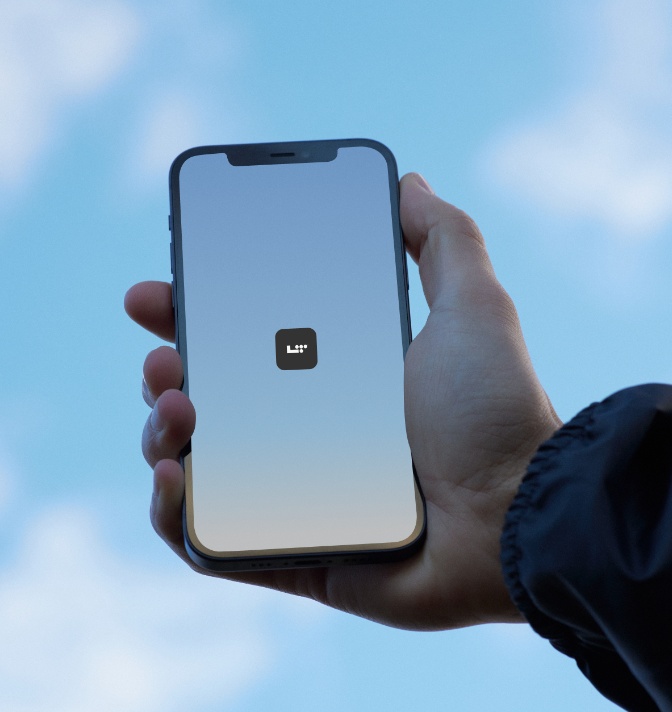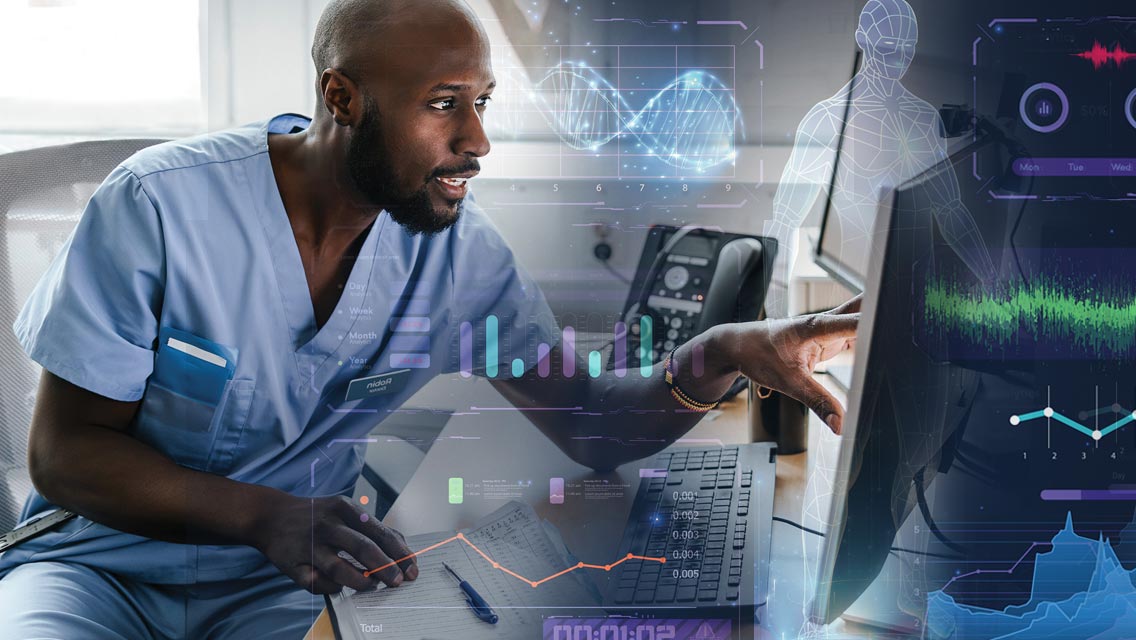As Experience Life celebrates 20 years, we think it’s fair to point out that we made whole-person health our passionate focus long before it was, well, cool. Today we’re delighted to notice a general trend across healthcare settings toward a more holistic understanding of what it means to be well — one that links individual well-being to collective and planetary health.
Here we present some of the latest healthcare developments that we find especially relevant, curious, interesting, and promising. We expect they will be shaping how we take care of one another and ourselves in the years to come, and we’re pleased to share them with you on the occasion of our 20th anniversary.
Salud!
Telehealth Boosts Healthcare Access
The practice of telehealth accelerated rapidly during the pandemic, when keeping physical distance became a key to staying healthy. The option of using video and messaging in place of office visits had existed for years, but doctors and patients worried about pitfalls: Would patients and providers be able to forge a strong connection via video? Could practitioners make accurate assessments and diagnoses without a physical meeting?
Happily, says Susan Blum, MD, MPH, the answer is usually yes.
“Some people were concerned about what patients might lose out on, but I think they’re getting more,” says the founder of Blum Center for Health and assistant clinical professor at the Icahn School of Medicine.
For her, telemedicine appointments are often more collaborative than in-person ones. “I can put images from the radiologist or a scan on the screen and have patients see what I see,” says Blum. “It’s more intimate than people realize.”
As an integrative doctor, she also values the patient portal for sharing easily forgotten details, like a supplement list.
Another benefit is choice. “You can work with any provider you want,” says functional-medicine practitioner Peter Kozlowski, MD. “You don’t have to go to the one person in your neighborhood.”
When Kozlowski moved from Chicago to Bozeman, Mont., in 2020, he put his practice online — and he does miss some aspects of in-person visits. “It’s a different type of connection with telemedicine,” he says. “I feel like I have a slightly stronger connection with patients I’ve met at least once in person.”
But, he continues, “I can still do 99 to 100 percent of the things with telemedicine that I can do in person.”
Telemedicine is not the right tool for every visit: If you have a broken leg or a suspect lump, only an in-person exam will do. “For acute-care medicine, you usually have to go see someone,” says Blum. But for those with chronic conditions, the chance to consult more regularly about lab tests and other issues can be welcome.
Finally, telemedicine increases healthcare access. Blum has noticed fewer no-shows and cancellations now, perhaps because the act of logging on is so much easier than driving to a clinic, especially when you feel ill.
— Laine Bergeson Becco
Environmental Health is Human Health
Recent research makes clear that human health and planetary health are not just connected — they’re inextricable. It also shows that our enmeshment with our ecosystems has both negative and positive effects, something many healthcare providers now take into account.
For example, obesity rates in the United States are presently highest in Alabama, Louisiana, Mississippi, and West Virginia — a fact commonly attributed to local diets. But in her presentation at the Integrative Healthcare Symposium in 2020, integrative cardiologist Mimi Guarneri, MD, noted that farms in these states also have the highest use rates of the herbicide atrazine, which research has shown to increase insulin resistance and interfere with metabolic function.
Likewise, as rates of type 2 diabetes and kidney disease climb countrywide, researchers find that even low levels of exposure to arsenic — now common in U.S. water and soil — are associated with those ailments, as well as hypertension and cancer.
Although the environment can harm human health, it can also do the opposite. Plenty of evidence points to the salutary effects of spending time in nature. Digging in the dirt can increase the diversity of our microbiomes. Sunlight provides vitamin D, vital to immune function. And “forest bathing,” which involves breathing in the phytoncides released by trees, can lower heart rate, blood pressure, and inflammatory stress hormones.
While it may feel discouraging that toxic exposure has become a necessary metric for understanding chronic conditions, the benefits of connecting environmental and human health are twofold.
First, this knowledge gives providers more tools to treat people who have diffuse chronic conditions like autoimmunity.
Second, awareness of our intimate connection with nature can reduce our alienation from it, encourage us to spend more time outdoors, and invest more energy in caring for the planet. “The earth,” says Guarneri, “is also the clinician’s client.” And our doctor, too.
— Courtney Helgoe
Reframing Addiction as a Public-Health Issue
Prosecuting those who possess illegal drugs has long been standard practice in the United States, but the skyrocketing rates of addiction and overdose in recent years suggest we need a different approach.
One substantially more humane and cost-effective strategy that some lawmakers are embracing is to reframe drug addiction as a matter of public health.
“It’s imperative that we change our culture so that people suffering from addiction aren’t stigmatized and isolated,” explains Anthony Johnson, co-chief petitioner of Measure 110, the 2020 ballot initiative that decriminalized recreational drugs in Oregon. “By treating them as criminals, you prevent them from coming forward.”
Research has consistently shown that incarceration doesn’t deter drug use or heal addiction. It also imposes substantial barriers to rehabilitation, including denial of federal benefits like student loans, and probationary terms that make it tough to find work.
And this hits hardest in communities of color. Black people and white people use illegal drugs at similar rates, but Black people are five to seven times as likely to be incarcerated for it.
This is one reason both decriminalization and legalization are gaining traction at the state and federal level. Six states passed drug reforms to legalize marijuana for medical or recreational use in 2020, bringing the total to 16 nationwide, plus Washington, D.C. Meanwhile, Oregon became the first to decriminalize the possession of all narcotics, including cocaine, heroin, and methamphetamine.
Decriminalizing drugs doesn’t make them legal, but it does allow possession to be treated as a civil rather than a criminal offense. Instead of serving jail time, people charged with possession pay a fine or agree to addiction-recovery treatment. Under Oregon’s Measure 110, these treatment centers are funded with tax revenue from recreational-marijuana sales as well as money previously used for drug enforcement.
— Kaelyn Riley
Health-Tracking Devices for Biofeedback
Biotracking is now part of the everyday: watches that track your workout, rings that evaluate your sleep, bracelets that measure your activity level. If you want to keep tabs on your heart-rate variability or your blood pressure, your blood-oxygen saturation or how many steps you take, there’s a device out there that will tell you those measurements.
In the world of wearable tech, Michael Ruscio, ND, finds sleep-tracking devices to be the most beneficial. “I learned that when I go to bed at 10:30 p.m. and sleep for seven hours, my sleep is demonstrably better than when I go to bed at 12:30 a.m. and sleep for seven hours,” he says. And he notes that devices like the Oura Ring track not just sleep quantity, but quality, which is equally essential to overall health.
Some functional-medicine experts are less sure about the use of health-tracking devices, noting that wearable tech emits electromagnetic fields (EMFs), the effects of which are still mostly unknown.
“We have so many EMFs around us already that wearing them all the time is a little bit scary,” says Susan Blum, MD. “If you want to track your heart rate while you work out, or you want to train up with a high-intensity program, I think wearing them for a short duration is fine. But I don’t believe in wearing something day and night.”
There’s also the risk of a little information becoming too much. “You’ll have people laboring over a specific metric,” says Ruscio, when a clinician could recognize that number as normal. If someone isn’t equipped to interpret their results, he adds, “these devices can create more neuroticism than they can be helpful.”
Yet many people enjoy real-time feedback and feel motivated by it. So, if you wear a health-tracking device, do it wisely. Use it to measure specific things, for a specific period of time (and not around the clock). View the data as a baseline, not as a perfect reflection.
“Some of these devices aren’t always very precise,” says Ruscio. (There are even studies that suggest their results can be skewed by darker-colored skin.) This doesn’t necessarily negate the value of the data, but it can temper how you interpret it.
As always, listening to the body is the original biofeedback, so don’t leave that data behind.
— LBB
Animal-Assisted Healthcare
Humans are not alone in shaping the future of healthcare: Animal-assisted therapy, or “biotherapy,” is playing an increasing role in healing.
Biotherapy practices include support animals, such as therapy dogs, which can assist with a range of challenges. A 2015 study at Chicago’s Loyola University found that people recovering from joint replacement needed significantly less pain medication than the control group when they used canine-assisted therapy.
There are now diabetic-alert dogs that can detect signs of dangerously low blood sugar in people with diabetes. Studies have been conducted to see if dogs’ ability to sniff out cancer can be trained in a systematic-enough way to use their diagnostic help in clinics. In February 2021, there were four dogs working at Miami’s American Airlines Arena that were trained to sniff out COVID-19 in ticketholders waiting to enter.
Horses are especially good at helping humans heal. Equine therapy can support children who have cerebral palsy develop greater strength, sensory integration, and coordination, as well as help military veterans in PTSD recovery.
Finally, some old biotherapy treatments are becoming new again, such as maggot debridement therapy (MDT), in which the larvae are used to clean wounds. While the notion may challenge the faint of heart, the reintroduction of this practice (common before the development of antibiotics) is good news, especially as rates of type 2 diabetes increase, and along with them, the numbers of nonhealing diabetic foot ulcers.
Research has shown MDT to be substantially more effective and efficient than conventional methods in cleaning and healing these wounds, and it may be especially useful for wound care in light of the rise in antibiotic resistance.
Worms can assist human health internally as well. Helminth therapy is an experimental treatment using controlled doses of intestinal parasites to help people manage and recover from inflammatory and autoimmune conditions; they appear to give an overactive immune response a more reasonable target than the body’s own tissues.
— CH
Lab Testing Creates More Personalized Medicine
Many healthcare providers have begun to recognize that no two bodies are exactly the same, especially when treating complex chronic conditions. This insight has meant relief for many, thanks in part to targeted lab testing that can help identify the root causes of different symptoms and conditions.
Root-cause data can give practitioners what they need to design effective — and personalized — treatment plans. “There are different kinds of arthritis, and something different triggers it for everyone,” explains Blum. “For some, it could be a gut–arthritis connection; for others, it could be an infection like Lyme disease. For someone else, it might be an old injury or excess weight or too many toxins in the body.”
Without targeted sleuthing — like blood tests and microbiome mapping — treatment can often be a guessing game. “Not everyone with the same diagnosis has the same cause,” says Blum. “That’s why we personalize with different testing.”
This trend does present some challenges, similar to wearable tech. This is especially true of direct-to-consumer testing, which may produce a complicated printout of difficult-to-interpret data. Or the lab may offer blanket advice based on numbers that don’t take other health metrics into account.
Meanwhile, the internet can be a minefield of potential misinformation and confusion when you’re interpreting your own results.
“Many people who come through my door have read the whole internet [trying to interpret their results] and they have made themselves worse because all the research has elevated their [stress hormones],” says Kozlowski.
With the exception of simple direct-to-consumer tests, such as those that measure blood sugar, the best use of lab testing seems to be in partnership with an expert who can help translate the results. In that context, the granular level of feedback that lab testing provides can be the difference between an ongoing health mystery and a solvable problem, and these cases are where personalized medicine shines.
— LBB
Psychedelics for Mental Health
Research into the therapeutic potential of psychedelic drugs has gained traction in recent years, as indicated by the popularity of journalist Michael Pollan’s 2018 bestseller How to Change Your Mind. Studies have largely focused on psilocybin (the active compound in “magic mushrooms”), MDMA (also known as ecstasy), and LSD.
Growing evidence suggests that physician-supervised use of psychedelics can successfully treat mental-health conditions. A 2016 study found that psilocybin decreased depression and anxiety in patients with life-threatening cancer. Another study from 2018 found that MDMA reduced PTSD symptoms in a group of military veterans, firefighters, and police officers.
In some cases, these therapeutic benefits can be achieved through microdosing, which involves taking a small dose of a psychedelic substance — typically 10 percent or less of an average dose, enough to potentially yield positive results without “tripping.”
“The drug is a skeleton key which unlocks an interior door to places we don’t generally have access to,” psychologist William A. Richards, PhD, told Scientific American. “It’s a therapeutic accelerant.” Richards works with the psychology department at Johns Hopkins University in Baltimore, home to the country’s leading program devoted to researching psychedelics and mental health.
The timing may be ideal for this “therapeutic accelerant.” Millions of people are facing mental-health challenges in the wake of the coronavirus pandemic. Though worldwide rates of depression and anxiety were on the rise before the pandemic, the many losses it caused exacerbated this trend. For instance, there has been a marked increase in posttraumatic stress among frontline workers and healthcare providers.
Tools to help with trauma recovery and emotional stability are needed more than ever. Psychedelics are not for everyone — particularly those who struggle with substance-use disorder — but they do appear to be a promising tool for mental-health providers to add to the toolbox.
— KR
Understanding Social Determinants of Health
As the coronavirus’s disproportionately devastating effects have shown, health can be intimately tied to ZIP codes. Yet many researchers and providers have come to recognize the COVID map as just one illustration of how health outcomes can be socially determined.
Studies now show that racial equity, economic stability, quality education, steady housing, workplace safety, social connections, and access to fresh food, clean air, and good water all have a measurable impact on well-being. These “social determinants of health” can influence whether we get type 2 diabetes, heart disease, hypertension, or cancer, and how well we’re likely to fare with such conditions.
These factors are finally being recognized for the role they play in collective well-being. The World Health Organization has established a commission on social determinants, an emphasis shared in the United States by health initiatives such as the National Partnership for Action to End Health Disparities and the National Prevention and Health Promotion Strategy. Social determinants are also a key focus for the CDC.
This data is shaping the way some clinics offer services. In 2018 the Cleveland Clinic launched its population health initiative, working with community partners to close gaps in access by providing basic services, such as rides to clinic appointments.
At the same time, recognizing the social determination of health also involves addressing those influences that may not appear health-related, such as wealth inequality, social isolation, and systemic racism and discrimination. These issues require action at the policy level.
“Many solutions for better health exist outside the healthcare system,” reads a 2019 report from the American Cancer Society’s Blueprint for Cancer Control.
Put another way: Just as the factors that shape health are all around us, the solutions to health inequities are everywhere, too.
— CH
The Good-Death Movement
Different cultures have different ways of dealing with the end of life: In the United States, death is often viewed as the antithesis of life — and the pursuit of health is seen as a way to indefinitely stave off dying.
Yet members of a growing “death-positivity” movement seek to rewrite this script, reminding us that death is an integral part of life, not separate from or opposed to it. This reframe, proponents say, can help us live more fully and die with more dignity.
According to mortician and death-positivity activist Caitlin Doughty, who cofounded the advocacy group Order of the Good Death in 2011, this take on death reflects an evolving world. “The world has become a global community where we do not have to live and die in the towns [where] we were born, nor do we have to believe what our parents believed,” says Doughty, who cohosts the podcast Death in the Afternoon, and whose best-selling book From Here to Eternity is a travelogue that searches out the “good death” in different cultures.
“We can think much bigger,” she says. “How we die is, after all, how we live.”
Doughty’s death-positive approach includes more open conversations about the end of life; more options for end-of-life care, including palliative care and hospice; and a willingness to embrace new rituals and rules governing what we do to and for our dead.
Art, education, private discussions, and public gatherings all play a role in exploring ways to abandon death phobia and death denial and helping us accept something we all share in life.
Death-positivity, explains Doughty, is about accepting that dead bodies are not dangerous, and talking about death, dying, and the end of life is not morbid. That said, it’s not about being fearless around death either.
Rather, she says, “[it] means committing to staring down your death fears — whether it be your own death, the death of those you love, the pain of dying, the afterlife (or lack thereof), grief, corpses, bodily decomposition, or all of the above. Accepting that death itself is natural, but the death anxiety and terror of modern culture are not.”
— Maggie Fazeli Fard






This Post Has One Comment
I think The future of healthcare is telehealth. It can boost the healthcare system to provide services to users and doctors to easily connect with patients as well. In today’s world, telehealth adopts day-to-day technology to continue evolving by increasing care outcomes and accessibility.
With updates and expansions over the coming years, general practitioners and mental healthcare professionals in particular can maintain their current telehealth capabilities to treat and retain as many patients as possible. Several platforms that adopted telehealth are Ongo Care, Plushcare, Teladoc, and many others.